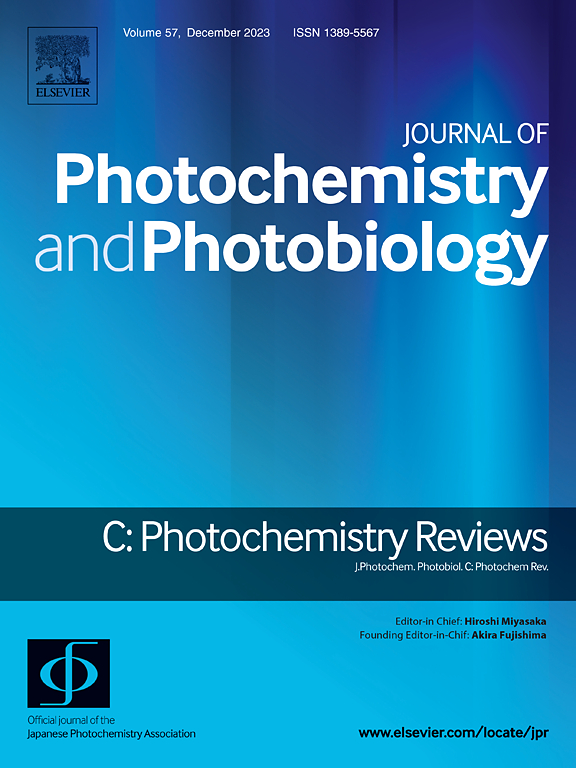Fluorescent fluorinated materials: A novel material for application in photodynamic therapy and designing chemical sensors
IF 12.8
1区 化学
Q1 CHEMISTRY, PHYSICAL
Journal of Photochemistry and Photobiology C: Photochemistry Reviews
Pub Date : 2024-08-01
DOI:10.1016/j.jphotochemrev.2024.100677
引用次数: 0
Abstract
Fluoro-organic compounds have been uninterruptedly shining since their inception in the scientific community. Their presence is indispensable in every corner of scientific research and application. Due to the inherent properties of fluorine atoms, fluorinated materials showed improved performance and higher stability. Further, perfluorinated hydrocarbons which contain many fluorinated atoms and roughly have ≥60 wt percent fluorine in the C(sp3)-F bond show interesting structural and photophysical properties. These are soluble in fluorous solvents, amphiphilic, exhibit non-polarizability, high gas content, and reduced molecular mobility, which makes them very special. As a result, these fluorous chemicals and solvents have been extensively used in a variety of fields. There is a continuous upsurge of interest and we have witnessed new research areas viz, catalysis, drug-delivery, imaging, photodynamic therapy, and chemical sensing. Due to self-aggregation properties, fluorous tagged molecules have been exploited in the production of nano and microstructures and thus open scope in different biological applications. Additionally, fluorous tags fluorophores dramatically change the photophysical properties and thus allow being used in chemical and biological sensing. Here, we have summarized the latest advancements in new fluorous materials, synthesis, photophysical properties, and emulsion formation for their use in photodynamic therapy and chemical sensing applications.
荧光含氟材料:应用于光动力疗法和设计化学传感器的新型材料
自诞生以来,氟有机化合物一直在科学界发光发热。科学研究和应用的每个角落都离不开它们的身影。由于氟原子的固有特性,含氟材料具有更好的性能和更高的稳定性。此外,全氟碳氢化合物含有许多氟化原子,C(sp3)-F 键中氟的重量百分比大致≥60%,具有有趣的结构和光物理特性。它们可溶于多氟溶剂,具有两亲性,表现出非极化性,气体含量高,分子流动性低,因此非常特别。因此,这些含氟化学品和溶剂已被广泛应用于各个领域。人们对它们的兴趣不断高涨,我们已经看到了催化、给药、成像、光动力疗法和化学传感等新的研究领域。由于具有自聚集特性,荧光标记分子已被用于生产纳米和微结构,从而为不同的生物应用开辟了空间。此外,荧光标签荧光团还能显著改变光物理特性,因此可用于化学和生物传感。在此,我们总结了新型荧光材料、合成、光物理性质和乳液形成方面的最新进展,以便将其用于光动力疗法和化学传感应用。
本文章由计算机程序翻译,如有差异,请以英文原文为准。
求助全文
约1分钟内获得全文
求助全文
来源期刊
CiteScore
21.90
自引率
0.70%
发文量
36
审稿时长
47 days
期刊介绍:
The Journal of Photochemistry and Photobiology C: Photochemistry Reviews, published by Elsevier, is the official journal of the Japanese Photochemistry Association. It serves as a platform for scientists across various fields of photochemistry to communicate and collaborate, aiming to foster new interdisciplinary research areas. The journal covers a wide scope, including fundamental molecular photochemistry, organic and inorganic photochemistry, photoelectrochemistry, photocatalysis, solar energy conversion, photobiology, and more. It provides a forum for discussing advancements and promoting collaboration in the field of photochemistry.

 求助内容:
求助内容: 应助结果提醒方式:
应助结果提醒方式:


